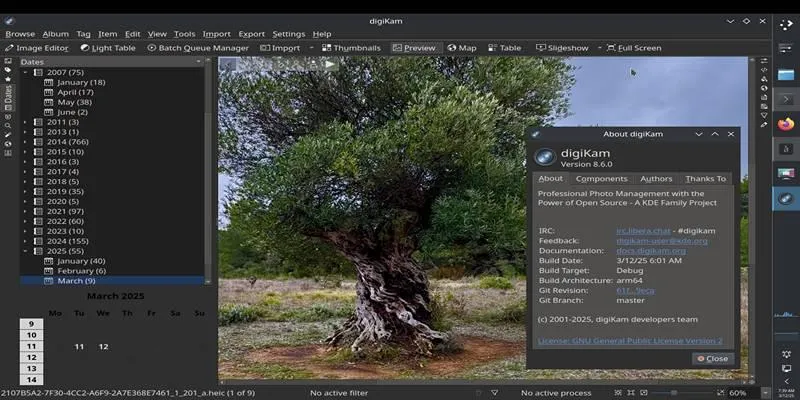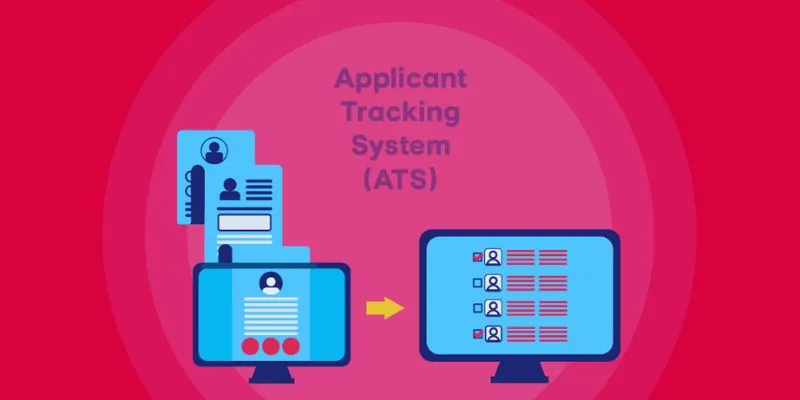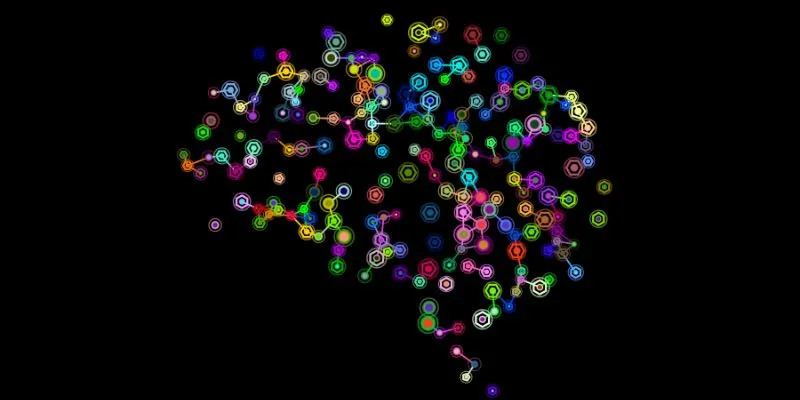digiKam 8.6 Launches with Enhanced Face Recognition and Auto-Tagging
The release of digiKam 8.6 marks a significant advancement in open-source photo management applications. This version introduces improvements in performance, facial recognition accuracy, automated tagging, and image quality management. Tailored for photographers, archivists, and users managing extensive photo libraries, digiKam 8.6 solidifies its role as a comprehensive digital asset management tool, emphasizing user control, efficiency, and modern machine learning enhancements.
With a series of well-calibrated upgrades, digiKam 8.6 offers a practical blend of deep learning tools and refined interface features, all packaged in a lightweight, local-first environment. Notably, the update includes enhanced face recognition, smarter auto-tagging, GPU acceleration, and additional adjustments to boost photo classification accuracy.
Revamped Face Recognition System
One of the most significant improvements in digiKam 8.6 is the complete overhaul of its face recognition engine. The developers have implemented a hybrid model using K-Nearest Neighbor (KNN) and Support Vector Machine (SVM) classifiers for a more accurate and efficient face-matching process. These classifiers analyze facial features effectively, enabling better identification across photo collections.
The updated algorithm provides a 25% to 50% boost in processing speed, depending on hardware capabilities. This increase is due to improved CPU utilization and pipeline optimization, allowing faster batch analysis of large image libraries — a noticeable difference during face recognition sessions for users managing thousands of photos.
This enhanced system also features Face Image Quality Assessment (FIQA), ensuring only clear and usable facial data is incorporated into the training set. By filtering out blurry or low-quality images, digiKam prevents performance degradation caused by noisy data.
Detection Using Deep Learning and GPU Support
In addition to face recognition, face detection itself has received a significant update. digiKam 8.6 now leverages YuNet for initial face detection and SFace for feature extraction. These modern AI models replace older methods, offering precise identification of faces even under challenging conditions like side profiles or varying lighting.
These updates are further enhanced by GPU acceleration support, allowing systems with compatible hardware to offload processing tasks from the CPU. Users can now scan and detect faces much faster on supported systems, making digiKam more scalable for professional workflows.
To improve detection consistency, digiKam standardizes all images into the RGB color space before analysis. This ensures recognition models receive uniform input, reducing inconsistencies caused by varying image color profiles.
Improved Auto-Tagging with Confidence Controls

Alongside facial recognition improvements, digiKam 8.6 enhances its Auto-Tagging Engine, which categorizes images based on visual content. This update introduces a restructured pipeline with new classification models capable of distinguishing between objects, scenes, and themes.
The tagging system now includes a user-adjustable confidence threshold, allowing users to decide how conservative or aggressive the auto-tagging function should be. Those preferring precise results can set a high threshold to limit tag suggestions to those with strong confidence scores, while a lower threshold allows broader tagging coverage.
This configurability ensures the auto-tagging system adapts to a wide variety of user needs—from precise archival classification to lightweight visual organization.
Face Management Interface Enhancements
Beyond performance and accuracy upgrades, the face management interface has been redesigned for greater usability. digiKam 8.6 presents a streamlined environment for reviewing, assigning, and correcting face tags, beneficial for managing libraries that have undergone partial tagging in previous versions.
Improvements include clearer visual grouping, simplified navigation between photos, and better integration with the overall tagging system. The refined interface makes it easier to validate detected faces, ensuring tagging adjustments are both fast and intuitive.
Red Eye Removal with Deep Learning Precision
Another significant update in digiKam 8.6 is the transition to AI-powered red eye correction. This deep learning-based approach improves accuracy in detecting and correcting red eye artifacts without falsely adjusting eyes in natural lighting conditions.
The new model analyzes facial structure in context rather than relying on basic color contrast detection. As a result, red eye correction is more accurate and less invasive, preserving the natural appearance of eyes while minimizing the need for manual intervention.
Image Quality Scanner: A Rebranded Utility
In an effort to enhance tool clarity, digiKam 8.6 renames the “Image Quality Sorter” to “Image Quality Scanner”. Though the functionality remains similar, the renaming reflects a more accurate description of the tool’s role.
The scanner evaluates images for attributes like sharpness, exposure balance, and noise levels, applying tags based on user-defined thresholds. By making this feature more visible and moving it to the Labels tab, digiKam encourages users to efficiently filter low-quality photos.
Backend Stability and Performance Fixes

digiKam 8.6 includes a wide range of bug fixes and performance optimizations aimed at improving stability across various platforms and use cases.
Key improvements include:
- Reduced memory usage during face detection and tagging operations
- Faster application startup for large photo libraries
- Improved metadata parsing for embedded tags and image properties
- Better support for different database configurations and paths
These enhancements contribute to a more responsive application, ensuring digiKam continues to meet user expectations for managing collections with tens of thousands of photos.
Conclusion
digiKam 8.6 is a feature-rich update that underscores the project’s dedication to high-performance photo management powered by intelligent tools. With substantial improvements in face recognition, auto-tagging, image quality filtering, and interface usability, this release enhances every stage of the photo organization process—from import to categorization and curation.
Staying true to digiKam’s core values: freedom, control, and open-source integrity, whether organizing a small personal archive or managing an enterprise-level photo library, users will find in digiKam 8.6 a refined, fast, and deeply customizable platform ready to meet their needs.
On this page
Revamped Face Recognition System Detection Using Deep Learning and GPU Support Improved Auto-Tagging with Confidence Controls Face Management Interface Enhancements Red Eye Removal with Deep Learning Precision Image Quality Scanner: A Rebranded Utility Backend Stability and Performance Fixes ConclusionRelated Articles

7 Top-Rated Affordable Graphic Design Software to Boost Your Creativity

10 Best Meeting Scheduler Apps to Try in 2025

Top 5 Benefits of Using Social Intents for Support

How To Add Custom Search Engines To Chrome—Try These 7 Search Engines

The 9 Best Applicant Tracking Systems to Streamline Your Hiring Process

Top AI Background Removal Tools You Can Use Without Photoshop

Perplexity vs. ChatGPT

Fast and Free AI-Powered Tools to Cleanly Cut Photo Backgrounds

Boost Your Image Resolution: 5 Best AI Upscaling Apps

Top 9 Apps to Identify Anything Through Your Phone's Camera

Best Calendar Apps for Windows to Boost Productivity: Stay Organized in 2025

Fast and Free AI-Powered Tools to Cleanly Cut Photo Backgrounds
Popular Articles

Top Free Methods to Download GIFs on Your iPhone, Windows, or Mac

The Ultra HD 4K TV from Sony at CES 2014 That Stole the Spotlight

Top Tools and Techniques to Auto-Create Tasks From Scheduled Events

How to Enable Mac Dark Mode Automatically and a Windows Alternative: A Guide

Where to Find Free Media Resources: 3 Best Websites

Discover the Best File-Sharing Apps for Secure Data Transfers

Pipedrive vs. Salesmate: A Detailed Comparison to Find the Best CRM

The Beginner’s Guide to Changing WAV Files into MP3 Format

Best iPhone Apps to Make Life Easier in 2025

The Future of Creativity: The 9 Best Brainstorming Tools in 2025

WAV to M4A: 5 Quick and Simple Conversion Methods

 mww2
mww2